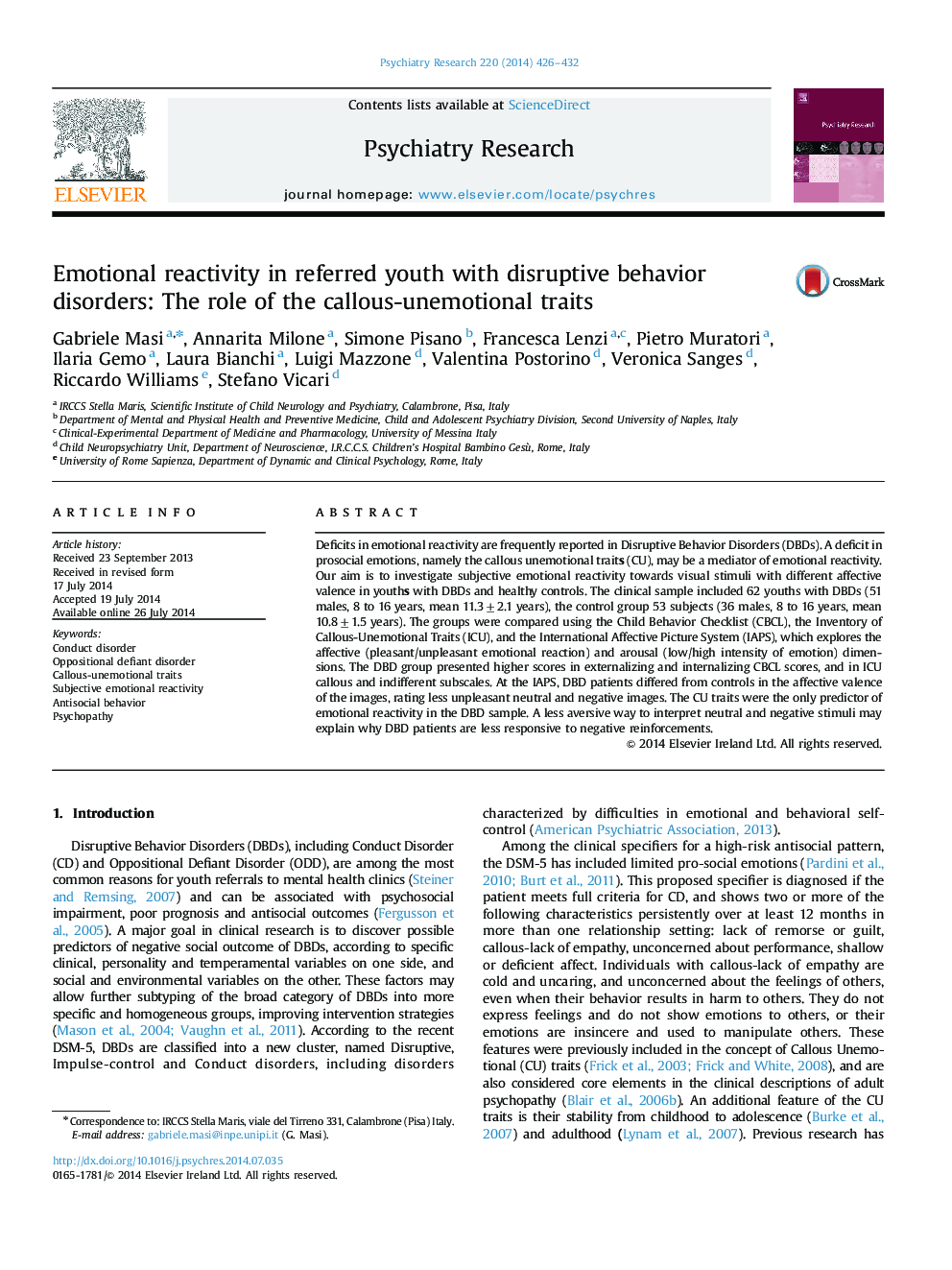| Article ID | Journal | Published Year | Pages | File Type |
|---|---|---|---|---|
| 6814956 | Psychiatry Research | 2014 | 7 Pages |
Abstract
Deficits in emotional reactivity are frequently reported in Disruptive Behavior Disorders (DBDs). A deficit in prosocial emotions, namely the callous unemotional traits (CU), may be a mediator of emotional reactivity. Our aim is to investigate subjective emotional reactivity towards visual stimuli with different affective valence in youths with DBDs and healthy controls. The clinical sample included 62 youths with DBDs (51 males, 8 to 16 years, mean 11.3±2.1 years), the control group 53 subjects (36 males, 8 to 16 years, mean 10.8±1.5 years). The groups were compared using the Child Behavior Checklist (CBCL), the Inventory of Callous-Unemotional Traits (ICU), and the International Affective Picture System (IAPS), which explores the affective (pleasant/unpleasant emotional reaction) and arousal (low/high intensity of emotion) dimensions. The DBD group presented higher scores in externalizing and internalizing CBCL scores, and in ICU callous and indifferent subscales. At the IAPS, DBD patients differed from controls in the affective valence of the images, rating less unpleasant neutral and negative images. The CU traits were the only predictor of emotional reactivity in the DBD sample. A less aversive way to interpret neutral and negative stimuli may explain why DBD patients are less responsive to negative reinforcements.
Keywords
Related Topics
Life Sciences
Neuroscience
Biological Psychiatry
Authors
Gabriele Masi, Annarita Milone, Simone Pisano, Francesca Lenzi, Pietro Muratori, Ilaria Gemo, Laura Bianchi, Luigi Mazzone, Valentina Postorino, Veronica Sanges, Riccardo Williams, Stefano Vicari,
